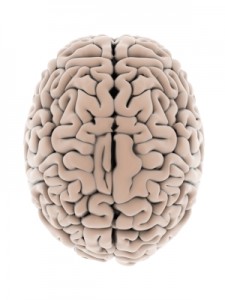Got Brain? Investing in Our Most Precious Asset in 2013
 Open a weekend New York Times or Wall Street Journal and you’ll find a whole section with detailed information and advice for individuals looking to invest wisely. What you will not find, however, is comparable information and advice for investing in your most important asset of all: your brain. Precisely because it (usually) does its job so smoothly and effectively, it’s all too easy to forget that your brain is there and that it needs to be invested in just as with anything else we value and want to continue reaping benefits from. And with more than 2 billion people worldwide currently suffering from brain-based health and productivity challenges with a resulting global economic burden of more than $2 trillion, it’s also an issue of some importance.
Open a weekend New York Times or Wall Street Journal and you’ll find a whole section with detailed information and advice for individuals looking to invest wisely. What you will not find, however, is comparable information and advice for investing in your most important asset of all: your brain. Precisely because it (usually) does its job so smoothly and effectively, it’s all too easy to forget that your brain is there and that it needs to be invested in just as with anything else we value and want to continue reaping benefits from. And with more than 2 billion people worldwide currently suffering from brain-based health and productivity challenges with a resulting global economic burden of more than $2 trillion, it’s also an issue of some importance.
We’ve made a lot of progress over the last century in understanding the brain, but it wasn’t until the last few decades that we’ve come to understand the ways in which our everyday behaviors affect, for better or worse, our brains’ health and performance. We now know that certain basic activities, including physical exercise, proper nutrition, stress management, and mental exercise, are integral components of a brain-healthy lifestyle, and people are waking up to the fact that they need to be proactive in monitoring and managing the health and fitness of their brains. As detailed in our new market report on digital brain health, the large majority of respondents to a 2012 SharpBrains survey of 3,000+ decision-makers and early adopters in the field found that the majority believe that brain health should be a healthcare priority, that adults should take charge of their own “brain fitness,” and that digital technologies significantly augment traditional approaches.
As a growing number of consumers, innovators, and decision-makers invest in digital technologies to better monitor and enhance cognition across the lifespan, we are witnessing the rapid growth and development of a new digital brain health marketplace. Right now, the digital brain health market – which includes both software applications and biometric hardware products designed to monitor, assess, enhance or repair neurocognitive functions such as executive attention working memory, emotional self-regulation – can be divided into four main customer segments: Consumers, Healthcare, senior living, and insurance providers, K12 school systems, and Employers. Consumers have become the predominant customer segment, surpassing healthcare/insurance providers, as the combination of an increase in the diagnosis of learning disabilities, anxiety disorders, and aging Baby Boomer population with a keen interest in maintaining their mental sharpness, and the trending desire for a healthy lifestyle, has consumers looking for healthier, non-invasive alternatives to existing drug-led and therapist-led approaches. Not only that: self-monitoring options for better managing one’s cognitive and emotional functioning are already becoming available to consumers at user-friendly prices and packaging, and strong signals suggest the next frontier in the consumer application of biometrics is going to be brain health.
The overall market has kept growing since 2009 despite the overall economic challenges, both in the software and hardware segments. We estimate the global market for brain health applications of software and biometrics to be over $1 billion in 2012, and we forecast it will reach $6 billion in 2020. The industry is still made up of many small companies, which has been a limitation for the marketplace’s maturation given contradictory, controversial marketing claims. That being said, sizable recent investments by strategic and financial investors suggest booming prospects and the increasing professionalization of the sector. As analyzed in our new market report, five leading companies –Brain Resource, CogState, Emotiv, Lumos Labs, NeuroSky- are already gaining significant market and research traction, and recent developments, such as Bayer partnering with CogniFit and Merck with CogState, underscore the sector’s growing level of maturity.
We can expect several drivers to fuel continued growth and innovation. Equipment which used to be expensive and cumbersome is becoming user-friendly and inexpensive, and tablets and mobiles phones are becoming a major delivery vehicle for digital brain health solutions. Heavy investment into online platforms are geared to gain consumer market share, with many companies offering free or freemium subscriptions. Over the course of this decade, we will likely see Big Data and cloud-based applications that will enable truly personalized brain health solutions, and a more developed ecosystem built around users and tools.
And while it’s unlikely that we’ll see people devoting as much time and attention to investing in their brains as in their finances any time soon, digital brain health solutions going mainstream among both consumers and healthcare providers will be a big step forward.
Because the fact is, we all got a beautiful human brain. We can invest in it to better live, love, work, innovate.
To Learn More:
- Market report, for innovators and decision-makers: The Digital Brain Health Market 2012–2020
- Upcoming Webinar: The State of the Digital Brain Health Market (January 17th, 2013)
- Book, for everyone with a brain: The SharpBrains Guide to Brain Fitness


